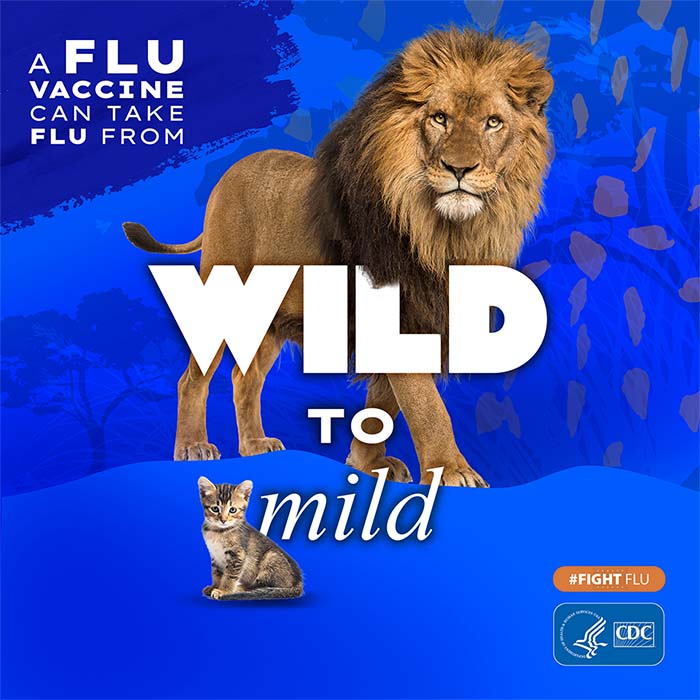CDC Responds to Approval of New Flu Antiviral Drug
December 3, 2018—On October 24, the U.S. Food and Drug Administration (FDA) approved a new drug to treat influenza (flu) illness, called baloxavir marboxil (trade name Xofluza® [594 KB, 13 Pages]). Baloxavir has benefits similar to other approved flu antiviral drugs, but works differently, giving clinicians another tool to treat flu illness. This new drug could be especially helpful in the event of the emergence of widespread resistance to the other influenza antiviral drugs (e.g., oseltamivir, zanamivir and peramivir).
Baloxavir is a “cap-dependent endonuclease (CEN) inhibitor” that interferes with viral RNA transcription and blocks virus replication. This means that it blocks the ability of the virus to make copies of itself within an infected cell. In comparison, the other available flu antiviral medications, which are “neuraminidase inhibitors,” do not directly interrupt replication within an infected cell, but instead work to prevent new copies of the virus from leaving the infected cell and spreading to healthy cells.
In response to FDA’s approval of baloxavir and its entry into the U.S. market, CDC has taken a number of steps:
For example, CDC conducted next-generation sequencing (NGS) and subsequently analyzed thousands of influenza viruses submitted as part of its active “right size” surveillance program. All influenza viruses submitted to CDC are sequenced as a first step so CDC can quickly analyze viruses, including identifying viruses with molecular markers known to confer baloxavir resistance.
In addition, a laboratory assay (i.e., a test) that uses pyrosequencing technology was developed to detect the principal markers of baloxavir resistance in clinical specimens. These markers, known as “PA-38T/M/F,” were most commonly detected in viruses collected from baloxavir-treated patients. Validation of this pyrosequencing assay for use under Clinical Laboratory Improvement Amendments (CLIA) regulations is planned. CLIA are federal regulatory standards that apply to all clinical laboratory testing performed on humans in the United States. This new assay can be used in laboratories across the country to test for markers of baloxavir resistance.
Laboratory assays also were developed to test the susceptibility of influenza viruses to baloxavir in cell cultures. A “one-cycle infection-based” assay measures how well baloxavir inhibits the early stages of influenza virus infection (at a single cell level), while a “multi-cycle infection-based” assay measures how well baloxavir blocks infection of neighboring healthy cells. This multi-cycle assay is primarily used to test highly pathogenic avian influenza (HPAI) viruses with pandemic potential, whereas the one-cycle assay is used for testing of seasonal and other influenza viruses.
Baseline susceptibility to baloxavir was established by testing more than 100 seasonal human influenza viruses representing each influenza subtype and B virus lineage (e.g., influenza A(H3N2), A(H1N1), and influenza B/Yamagata and B/Victoria). Numerous animal or zoonotic influenza viruses that have pandemic potential were tested as well to determine their susceptibility to baloxavir. Eventually, the results of routine testing for baloxavir susceptibility will be incorporated into CDC’s weekly influenza communications report: FluView.
As part of efforts to build laboratory capacity for baloxavir susceptibility testing of circulating influenza viruses in the United States, CDC is collaborating with the Association of Public Health Laboratories (APHL) and the Wadsworth Center with the New York State Department of Health. CDC has assisted in training laboratory staff on the use of CDC’s new methods for assessing baloxavir susceptibility.
In addition to engaging in preparatory laboratory activities, CDC has begun to incorporate information and guidance surrounding the new antiviral drug into its public and clinician education and outreach activities materials, including a summary for clinicians.
FDA approval of baloxavir is a promising step forward for public health efforts aimed at acquiring new tools for combating seasonal influenza and future pandemics. Laboratory activities to prepare for the introduction of this new antiviral drug are an example of how CDC works diligently to prepare and respond when new medical countermeasures come to market.
